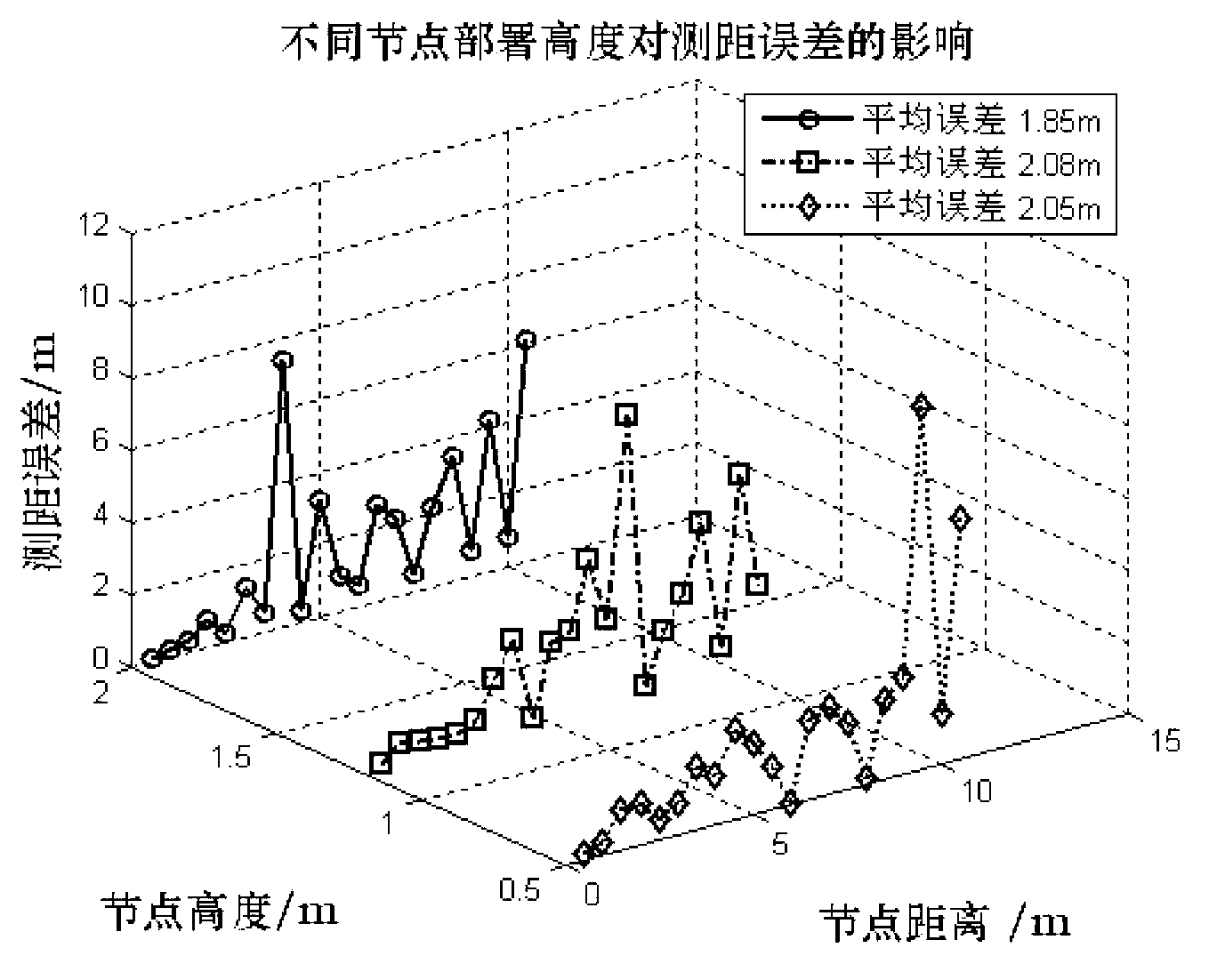Indoor antenna sensor network positioning method based on received signal strength indication
A technology of received signal strength, sensor network, applied in wireless communication, advanced technology, electrical components and other directions, can solve the problem that directional antenna cannot guarantee that the radiation direction covers unknown nodes, dynamically update signal attenuation parameters, there is signal delay, fingerprint matching positioning Method mismatch phenomenon and other problems, to achieve the effect of reducing noise distribution and prior information requirements, reducing adverse effects, and reducing energy consumption
- Summary
- Abstract
- Description
- Claims
- Application Information
AI Technical Summary
Problems solved by technology
Method used
Image
Examples
Embodiment
[0076] Such as Picture 9 As shown, 45 wireless sensor nodes are deployed in a 50m×50m two-dimensional space area; in the figure, the beacon node is a red five-pointed star, accounting for 20%; the unknown node that is successfully positioned is a solid black dot, the proportion is It is 80%; its estimated position is the solid gray origin; the unknown node that fails to locate is a hollow circle.
[0077] The positioning method of the present invention, the distance scalar method and the minimum-maximum method are used to locate unknown nodes respectively, and the positioning errors corresponding to each connectivity degree are obtained under the two conditions of uniform distribution and normal distribution. Picture 10 As shown, the red line rectangle icon in the figure is the positioning error obtained by the method of the present invention under different error distributions; the black line circle icon in the figure is the positioning error obtained using the distance vector m...
PUM
 Login to View More
Login to View More Abstract
Description
Claims
Application Information
 Login to View More
Login to View More - Generate Ideas
- Intellectual Property
- Life Sciences
- Materials
- Tech Scout
- Unparalleled Data Quality
- Higher Quality Content
- 60% Fewer Hallucinations
Browse by: Latest US Patents, China's latest patents, Technical Efficacy Thesaurus, Application Domain, Technology Topic, Popular Technical Reports.
© 2025 PatSnap. All rights reserved.Legal|Privacy policy|Modern Slavery Act Transparency Statement|Sitemap|About US| Contact US: help@patsnap.com



